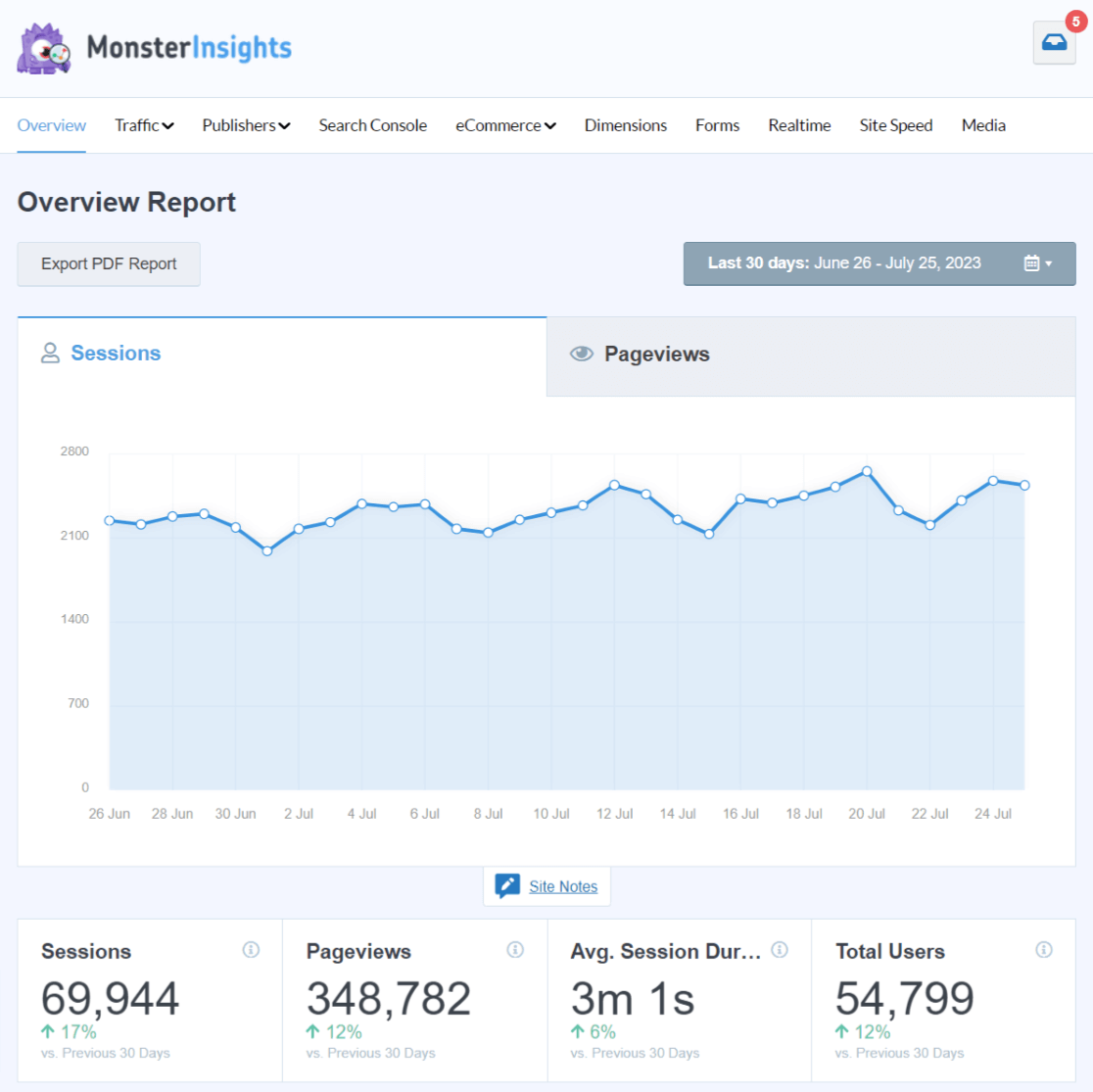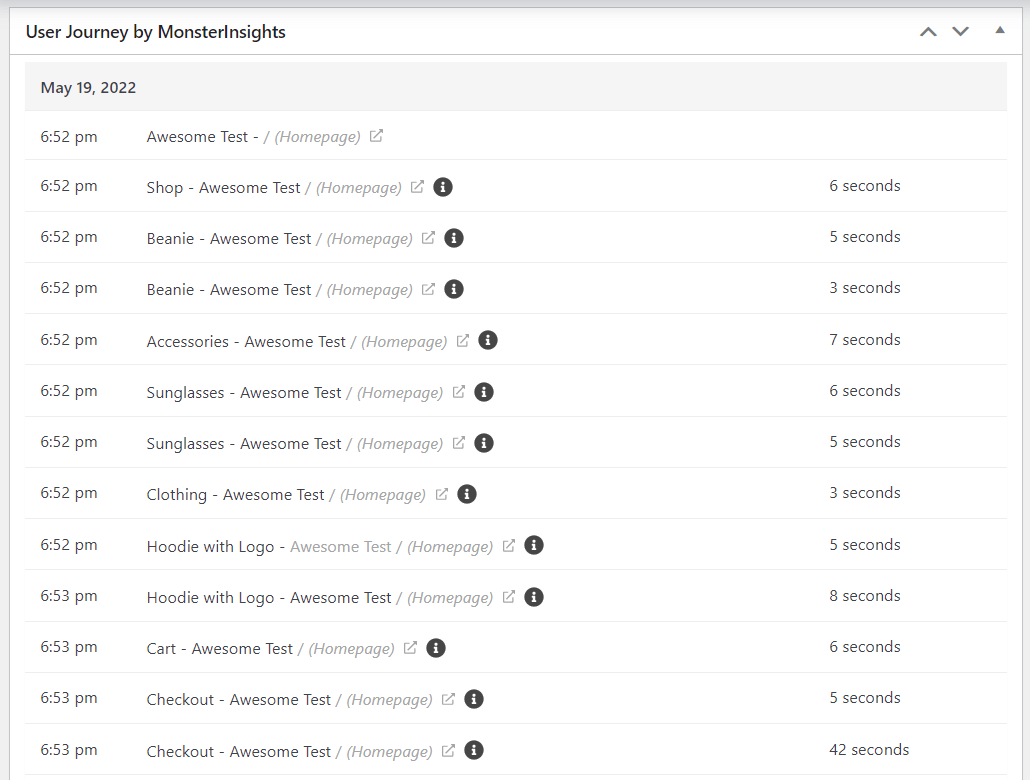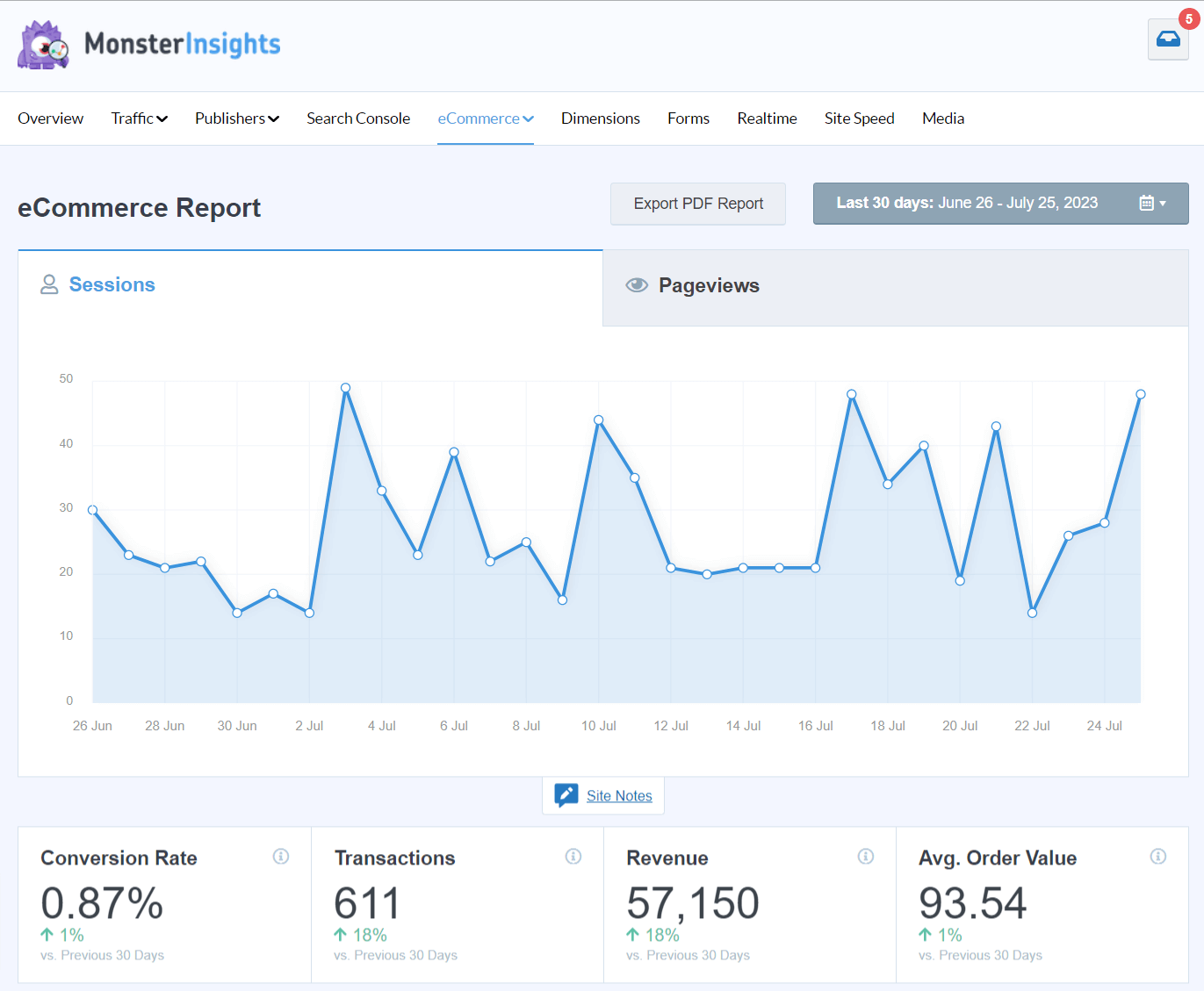Are you trying to determine your website’s vanity metrics and looking for more actionable metrics instead? You’re in the right place!
Understanding the difference between fluff and the figures that truly drive your website forward is crucial. It’s all about focusing on the data that helps your business grow rather than getting distracted by numbers that sound good but don’t add much value.
But what exactly are vanity metrics, and which ones should you avoid? How can you identify the metrics that truly matter for your website’s success?
Stick around as we explore the world of website metrics. We’ll help you determine what metrics are valuable and what metrics are vanity metrics so that you can ensure your efforts are directed toward strategies that genuinely improve your website and business.
What Are Vanity Metrics?
Vanity metrics are those impressive numbers you see in your website data that look great at first glance. While they may look impressive, they’re like shiny objects that catch your eye but don’t necessarily help your website grow.
It’s not that these numbers are completely useless. They do have their perks.
For instance, they can show that people find your content interesting or that your email headlines are catchy.
They might even show that your special offers are tempting enough for visitors to share their email addresses.
In a way, vanity metrics can reassure you that your content is reaching the right audience.
However, the catch is that they don’t guide you on how to improve. They don’t tell you how to get more people to buy something or sign up for more.
Now, let’s dig into which metrics from your website data might be just vanity numbers.
We’ll also cover the metrics that truly matter and can help you make smart decisions to boost conversions and sales.
7 Website Vanity Metrics
Let’s get to the heart of this guide. Here are the website vanity metrics we’ll cover:
- Page Views
- Email Open Rate
- Social Media Followers
- Number of Comments
- Number of Email Subscribers
- Number of Orders
- Number of Downloads
1. Page Views

Pageviews are a classic example of a vanity metric. This number tells you how many times people have viewed your pages.
At first glance, a high number of pageviews seems like a win. It suggests lots of people are visiting your website, right?
However, pageviews don’t tell the whole story.
The main issue with pageviews is that they don’t indicate whether visitors find your content valuable or if they’re engaging with your website in meaningful ways.
A visitor could land on your site by accident and leave immediately, which still counts as a pageview.
So, while having lots of pageviews might make you feel good, they don’t necessarily mean your site effectively engages visitors or convinces them to take action.
Instead of focusing solely on pageviews, you should focus on metrics that show how visitors interact with your site. Here are a few key metrics to consider:
- Bounce rate: This tells you the percentage of visitors who leave your site after viewing only one page. A lower bounce rate means people are exploring your site more deeply.
- Average session duration: This measures how long people stay on your site. Longer sessions can indicate more engaging content or a better user experience.
- Conversion rate: Ultimately, the goal of most websites is to encourage some form of action, whether it’s making a purchase, signing up for a newsletter, or filling out a contact form. Conversion rate measures the percentage of visitors who take that desired action, giving you a clear picture of your website’s effectiveness.
By focusing on these metrics, you can better understand how well your site resonates with visitors and what you can do to improve their experience and your site’s performance.
For WordPress users, MonsterInsights is invaluable for getting actionable website metrics.
Right from the overview report, you get a quick glance at sessions, pageviews, average session duration time, and bounce rate.

This allows you to quickly monitor and adjust your strategy to ensure your website effectively engages visitors and leads them toward the actions you want them to take.
2. Email Open Rate
This may seem a little surprising because we’re always talking about the importance of email marketing.
And yes, email marketing is important.
If people open your emails, you target the right audience and have a strong email headline.
However, it doesn’t matter how many people open your emails if they don’t convert.
That’s why tracking your email marketing campaigns is better than following just your email open rate.
Ensure that people click on your call to action button in your emails after opening the email. This will give you better insight into whether you offer people what they want.
In fact, a high click-through rate shows you that your emails have lead generating power. It also means you should keep doing what you’re doing to grow your business.
MonsterInsights is an essential asset for tracking website performance and email marketing campaigns.
Once your site is linked to Google Analytics through MonsterInsights, you have the capability to monitor the number of visitors clicking to email you and the clicks on links within your emails.
To learn more about email tracking, check out How to Set Up Google Analytics Email Tracking (4 Easy Steps).
3. Social Media Followers
The lure of a growing social media following is hard for website owners to resist. It’s often seen as a sign of brand popularity and reach.
However, the sheer number of social media followers is a classic vanity social media metric that might not directly contribute to your website’s success.
A large follower count doesn’t automatically translate into increased website traffic or higher engagement on your site.
Not all followers are equal regarding their potential to support your website’s goals. Many might never click through to your site or engage with your deeper content, making the follower count a less reliable indicator of online success.
Instead, look at how social media engagement (likes, comments, shares) correlates with visits to your website.
More important than the number of followers is the proportion of followers motivated to visit your site and explore your content or offerings.
With MonsterInsights, you can track your social media clicks to see how many people actually visit and engage with your site.
A smaller, highly engaged social media audience can be more valuable than a large but passive follower base.
Measure how social media activities impact your site’s key metrics, such as sign-ups, downloads, or sales, to understand the true value of your followers.
Use social media as a testing ground to see which topics or types of content resonate with your audience.
High engagement rates on social media posts that link back to your website can provide insights into what your audience is interested in, helping you refine your website content strategy.
4. Number of Comments
For website owners, a bustling comment section can appear as a hallmark of lively engagement and interest. It’s tempting to view many comments as proof that your content resonates with readers.

However, the sheer quantity of comments on your posts is another vanity metric that may not accurately reflect the value or health of your website’s community.
Many comments can be low-quality or even spam, which adds no real value to your content or to the discussions among your genuine audience.
In fact, a flood of spam comments can harm the user experience, making it harder for readers to find and participate in meaningful conversations.
Implementing a robust security plugin on your website is essential as a proactive measure.
Instead of fixating on the number of comments, delve into the substance of the interactions.
Are your readers asking questions, providing feedback, or sharing their experiences?
These qualitative aspects of your comments section offer deeper insights into how well your content engages your audience.
Moreover, genuine, thoughtful comments can serve as a goldmine for understanding your audience’s needs and preferences, guiding you in creating more targeted and relevant content.
They can also foster a sense of community and loyalty around your website, encouraging repeat visits and more engagement.
5. Number of Email Subscribers
Having a big list of email subscribers might seem like a sign of success, but how many subscribers actively engage with your emails matters.
It’s less about the sheer numbers and more about the level of interaction—opening emails, clicking on links, and responding to calls to action.
A smaller, engaged audience is far more valuable than a large, indifferent one.
Engaging content targeted to the specific interests of segments within your list can dramatically increase open and click-through rates.
Regularly cleaning your list to remove those who don’t engage keeps your metrics accurate and your focus on those who truly value what you’re sending.
Additionally, a more actionable metric is the paths subscribers take to convert into customers.
WordPress website owners can use the MonsterInsights’ user journey addon to map out exactly which steps your visitors take before converting into customers.

It allows you to effortlessly track your campaigns and optimize your website to enhance your user experience and conversion rates.
To help find your customers’ path through your website, check out our step-by-step tutorial on revealing your path to conversion in Google Analytics.
6. Number of Orders
For eCommerce or WooCommerce store owners, it’s tempting to fixate on the number of orders as a key indicator of success.
Seeing a high volume of orders can give the impression that your business is booming.
However, this important metric can be a bit misleading if you don’t look a bit broader. The sheer number of orders doesn’t account for the profitability of those orders or the customer’s lifetime value.
Some orders might be for low-value items, or you might be attracting one-time buyers rather than cultivating repeat customers. What truly matters is the quality behind those orders.
Are customers satisfied enough to come back or refer others to your store?
A more telling approach involves looking at metrics such as average order value, which can reveal whether you’re effectively upselling or cross-selling, and customer lifetime value, indicating the long-term profitability of your customer relationships.
Focusing on cultivating high-value orders and loyal customers can transform your business more significantly than merely increasing the number of orders.
MonsterInsights lets WordPress store owners dive deep into their store’s performance with detailed reports on popular products, sales, coupon code effectiveness, add-to-cart rates, and more.
With the eCommerce addon activated, you get a comprehensive eCommerce report right within the WordPress dashboard.

This allows store owners to get all the actionable insights that matter in order to monitor and grow their business.
7. Number of Downloads
For service-based business websites, tracking the number of downloads for resources like whitepapers and case studies is common.
While a high download rate may signal interest, it doesn’t always translate into actual sales or inquiries.
A more nuanced approach involves examining the quality of leads generated from these downloads and their conversion rates.
Understanding what proportion of downloads turn into qualified leads or sales offers a clearer picture of your content’s effectiveness.
Additionally, gauging how users interact with your downloadable content can provide insights into its relevance and quality.
Tools that track whether users spend time with or abandon the content quickly can be invaluable. This engagement level can highlight the value of the content to your audience.
Monitoring follow-up engagement is also crucial. After downloading, assess how many users respond to or interact with follow-up communication, like emails.
High follow-up engagement rates suggest that your content is valuable and that users are interested in further information from your brand.
Finally, pinpointing which channels—be it social media, search engines, or email marketing—are most effective in driving downloads can help you allocate resources more strategically and enhance the overall user journey.
Frequently Asked Questions
What is an example of a vanity metric?
An example of a vanity metric is the number of social media followers. While having a large following might seem impressive, it doesn’t necessarily indicate active engagement or conversion to sales, making it a less reliable measure of success.
Which KPI is a vanity metric?
Pageviews are often considered a vanity KPI because, although they indicate website traffic, they don’t necessarily reflect user engagement, content quality, or the ability of the traffic to convert into meaningful actions or sales.
What is the difference between vanity and actionable metrics?
Vanity metrics are surface-level indicators that look impressive but don’t offer actionable insights for business growth. In contrast, actionable metrics provide valuable information that can directly influence and improve business strategies and outcomes.
What are the risks associated with vanity metrics?
Relying on vanity metrics poses the risk of making decisions based on misleading indicators of success. This can divert attention from more critical issues, lead to wasted resources, and ultimately hamper genuine growth and customer engagement efforts.
And there you have it!
While these seven vanity metrics might initially look appealing and suggest success, they don’t offer the depth of insight needed for making informed, strategic decisions to grow your business.
Remember, it’s not just about the numbers that make us feel good but more about understanding the real impact and engagement behind those numbers.
If you liked this article, make sure to read:
- 15 Best Marketing Automation Tools to Grow Your Business
- How to Build an Email List: 16 Highly Effective Ways
- 4 Essential eCommerce Customer Retention Strategies
Haven’t tried MonsterInsights yet? Get started today!
And don’t forget to follow us on X, Facebook, and YouTube for more helpful website and Google Analytics tips.

Those aren’t vanity metrics. They form a pipeline, which can be improved in stages. They’re more “gateway” metrics.
For example, it’s good to reduce bounce rates and raise conversion rates, but once that’s done, more page views will likely bring more business. Similarly, having a highly-converting email sequence is great, but once you have that, more subscribers will likely mean more conversions.